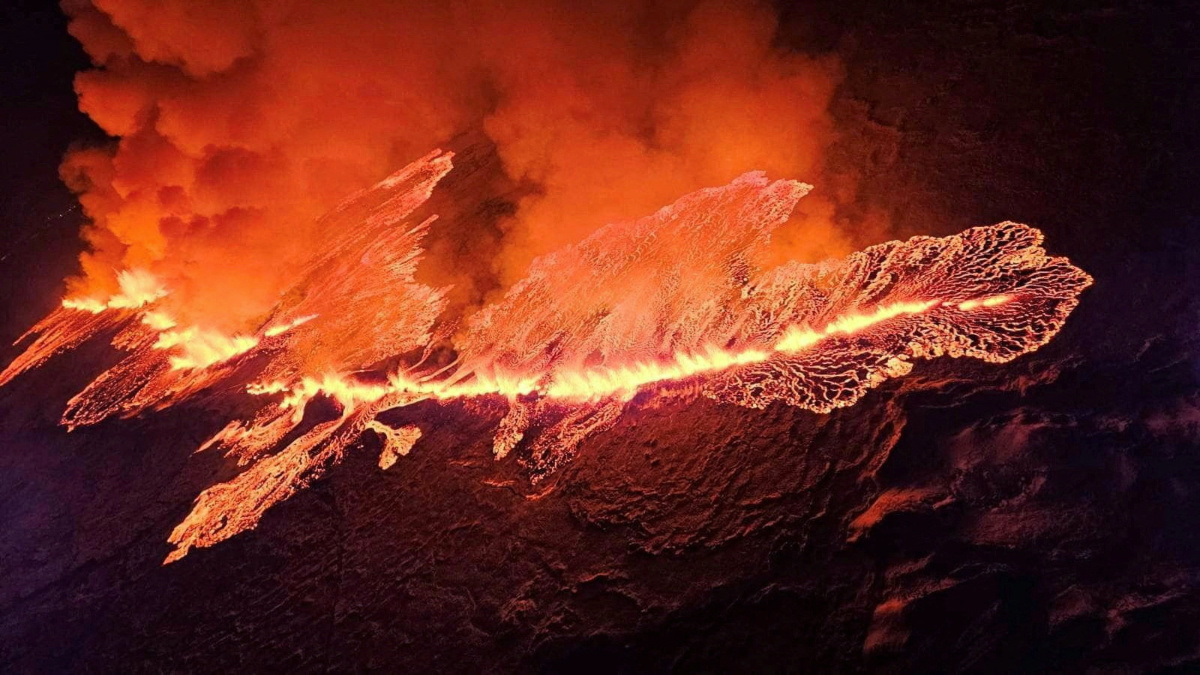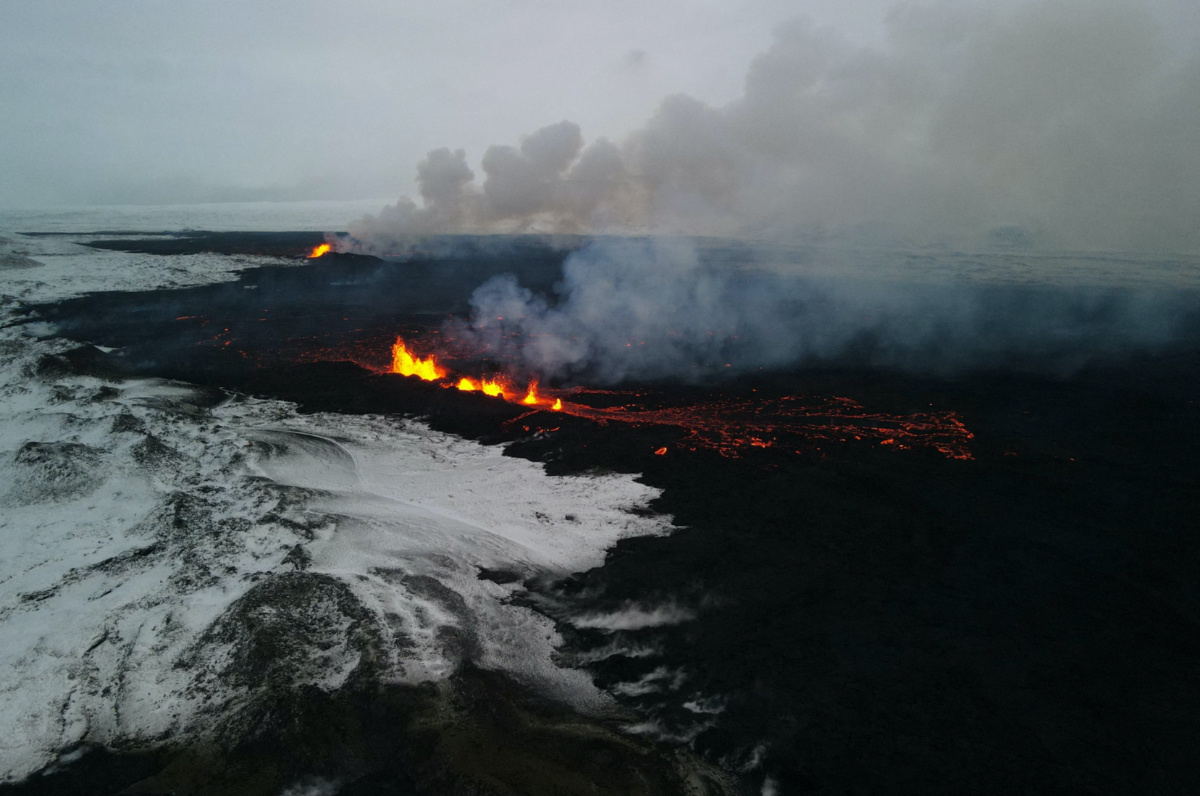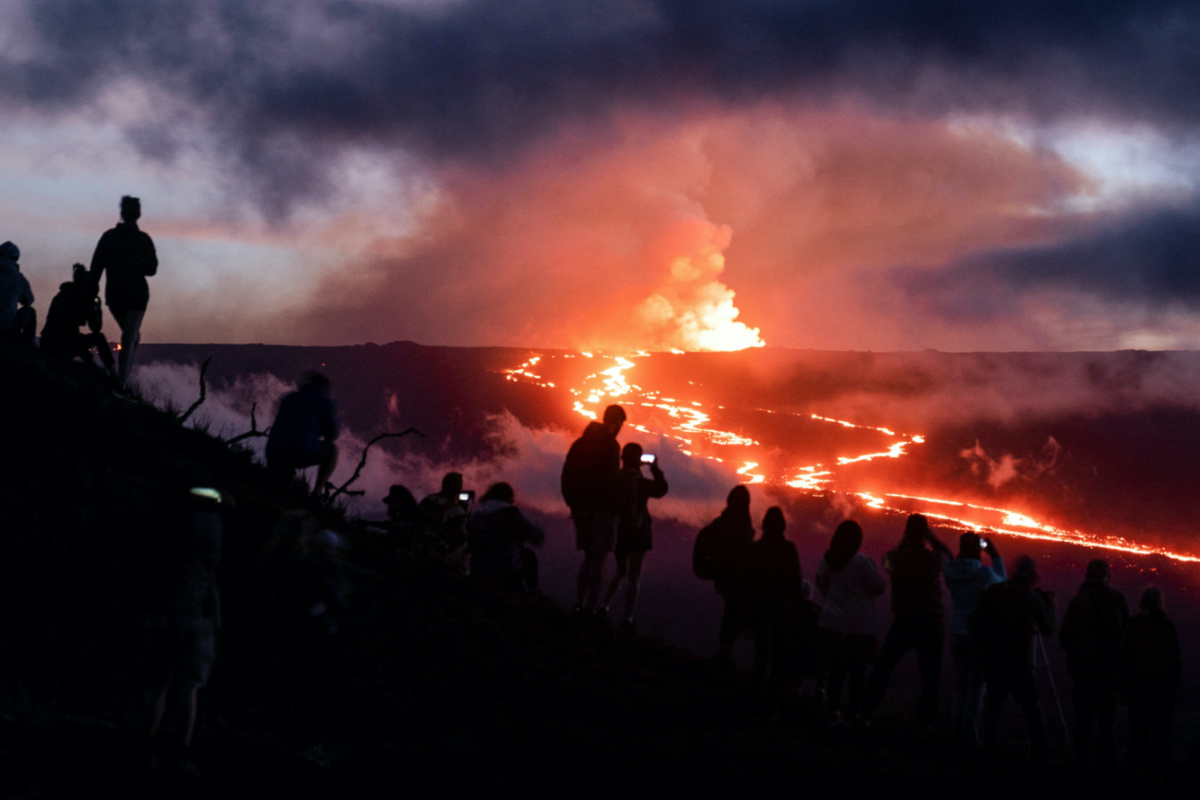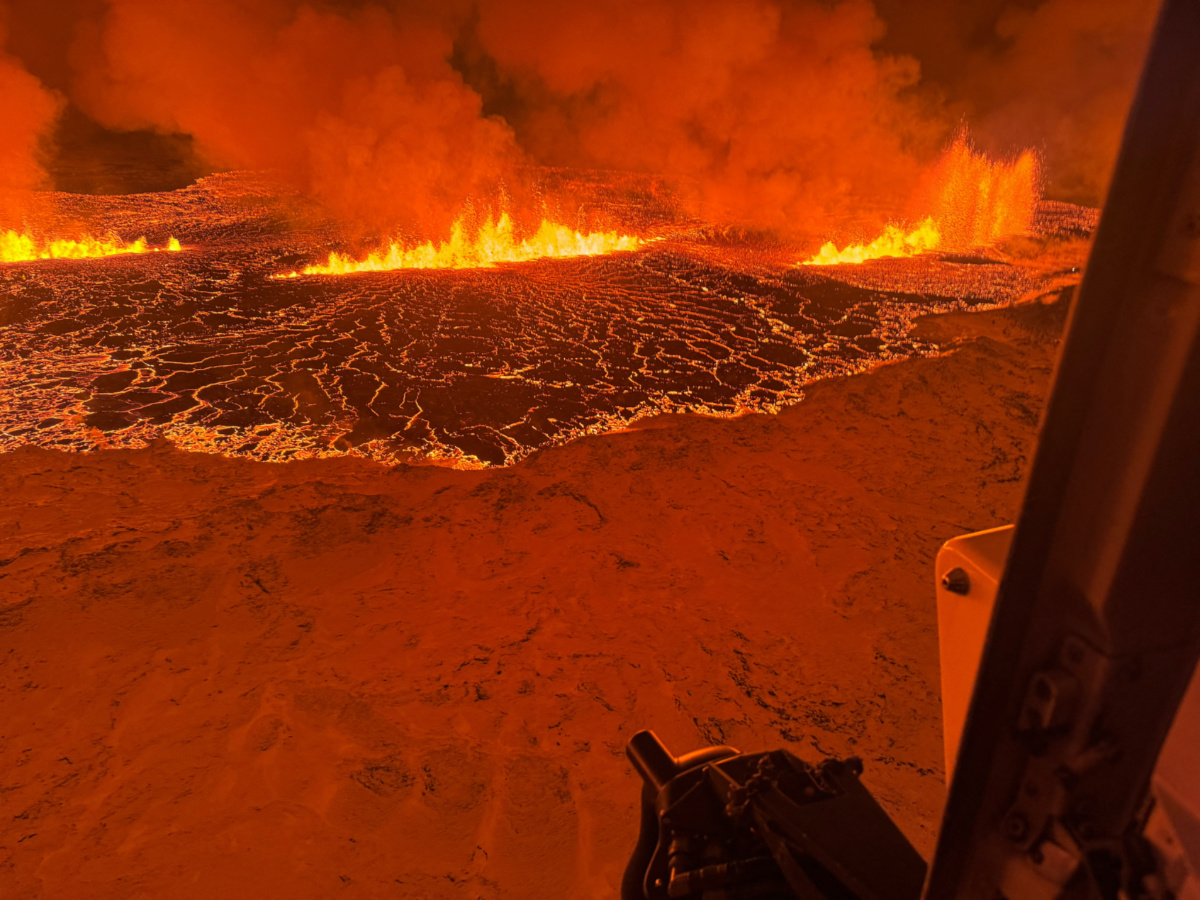
JOANNA PLUCINSKA and KRISZTINA THAN, of Reuters, report on the thrill of volcanic tourism…
London, UK/Budapest, Hungary
Reuters
As the glowing river of lava from a volcano that erupted last week in Iceland ebbed, not everyone was happy.
Hazel Lane, a 49-year-old dental practice manager in London, had booked a ticket to Reykjavik as soon as she saw footage of the eruption on television, hoping to witness spectacular lava flows beneath molten red skies.

A volcano spews lava and smoke as it erupts in Grindavik, Iceland, on 18th December, 2023. PICTURE: Civil Protection of Iceland/Handout via Reuters/File photo
Lane had already visited Iceland the previous month, but it was too soon. Although authorities had by that time evacuated the nearly 4,000 inhabitants of the nearby town of Grindavik, weeks passed before the volcano – which lies about 40 kilometres south-west of Reykjavik – erupted on 18th December.
“I had a crazy notion of going to Reykjavik for the day to fly over the volcanic eruption,” Lane said. She arrived with her son and his girlfriend on 22nd December to find that lava flows had already diminished.
“We’re disappointed that the volcanic activity has ceased but we will still have a beautiful day in Reykjavik.”
– Hazel Lane
“We’re disappointed that the volcanic activity has ceased but we will still have a beautiful day in Reykjavik.”
Lane will probably not have to wait long before the next eruption. Iceland, which is roughly the size of the US state of Kentucky and has fewer than 400,000 residents, boasts more than 30 active volcanoes.
That makes the north European island a prime destination for volcano tourism – a niche segment that attracts thousands of thrill seekers every year to sites from Mexico and Guatemala, to Sicily, Indonesia and New Zealand.

A drone picture shows lava spewing from the site of the volcanic eruption north of Grindavik, photographed from Sylingarfell, Iceland, on 19th December, 2023. PICTURE: Reuters/Sigurdur Davidsson
The decreased activity of the volcano near Grindavik quelled worries of a repeat of the travel chaos caused by ash from a major eruption of the island’s Eyjafjallajökull volcano in 2010.
But for local tour agencies, planning to take tourists to the site, it was a missed opportunity. Recent eruptions – like the 2021 Fagradalsfjall volcano in southwest Iceland – have drawn thousands of visitors.
Troll Expeditions – which offers tours to Iceland’s ice caves, glaciers, geothermal pools as well as a range of volcano trips – said tourist bookings to Iceland dropped before the Grindavik eruption due to the earthquakes preceeding it. But the eruption itself quickly brought back interest.
“People are very excited to see the volcano. Unfortunately, the eruption has paused for the moment,” the company said by email, noting it was the fourth eruption in the area in the past three years.
“The other eruptions have been great for tourism, as they have been so-called ‘tourist eruptions’ where you can get quite close to the crater and witness the lava flow.”
Iceland’s former President, Olafur Ragnar Grímsson, was already encouraging visitors to get ready for January.
“The predictions are that in two weeks the eruption might start again! Book your flight now so you can witness the Earth being created!” he said in a 23rd December post on social media platform X, formerly known as Twitter.
For dedicated ‘lava chasers’, nothing beats an arduous climb to the top of a volcano, the walk around a crater and the smell of sulphur in the air.
Often eruptions can be predicted well in advance, leaving plenty of time for evacuations and warnings.
When Mauna Loa in Hawaii, the world’s largest active volcano, erupted late last year for the first time since 1984, thousands of awestruck onlookers flocked to see its glowing lava streams. Hawaii’s Emergency Management Agency had already said there were no signs that lava would threaten populated areas.
But in some other cases, tourists have paid with their lives.
At the start of this month, Indonesia’s Marapi volcano erupted, killing 22 people: climbers who perished near the crater. Marapi is one of the most active volcanoes on Sumatra island and previously erupted in January and February this year.

People gather to observe the eruption of the Mauna Loa Volcano in Hawaii, US, on 1st December, 2022. PICTURE: Reuters/Go Nakamura/File photo
Indonesia, which straddles the so-called “Ring of Fire” around the rim of the Pacific Ocean, is home to more than 100 active volcanoes.
White Island in New Zealand, which is also known by the Maori name of Whakaari, has been closed since a disaster in 2019 when a volcanic eruption killed 22 people, mostly tourists. It used to regularly host visitors, though eruptions were not uncommon.
Despite such incidents, visiting volcanoes remains popular and, by managing risks properly, the chance of accidents can be minimalised, said Tom Pfeiffer, a geologist and volcanologist who runs VolcanoDiscovery, a company in Germany.
They organise tours to volcanoes around the world in small groups, taking on around 150 people per year to places including Java, Sulawesi, Sicily, and also Iceland. He said interest in visiting volcanoes fluctuated a little, depending on how much media attention they were getting, but was generally pretty steady.
“I’m sure the average number of accidents of volcano tourists is much lower than the average number of mountain sport accidents,” Pfeiffer said by email. “This also holds despite the fortunately very rare cases of big disasters like the recent one at Marapi.”
We rely on our readers to fund Sight's work - become a financial supporter today!
For more information, head to our Subscriber's page.
Pfeiffer said many of the accidents that did occur were due to a lack of preparation or information, or excess risk taking. Relying on local advice from authorities, volcano observatories and relying on guides with extensive experience could all mitigate the change of anything going wrong.
“In case of doubt, we never take the risk,” he added.

A volcano spews lava and smoke as it erupts, north of Grindavik, Reykjanes Peninsula, Iceland, obtained by Reuters on 19th December, 2023. PICTURE: Icelandic Coast Guard/Handout via Reuters
Iceland has witnessed diverse eruptions in recent years, from ones where lava flows from fissures – like the one last week – to explosive ones of ice-covered volcanoes that spew ash plumes, where fire meets the ice. Many of them have been major tourist draws, with the risks well-flagged by local authorities.
The area around Grindavik remains closed off for now, and the Icelandic Metrological Office said on 27th December that magma continued to accumulate under Svartsengi on the Reykjanes peninsula, meaning there is a chance of a fresh eruption.
Arnar Mar Olafsson, director general of the Icelandic Tourist Board, said that some travellers had not respected the closure zone around the eruption site and had to be turned away because they were heading towards the volcano.
“People really want to get close and to go closer and see, but they don’t really realise often how dangerous it is,” he said.






